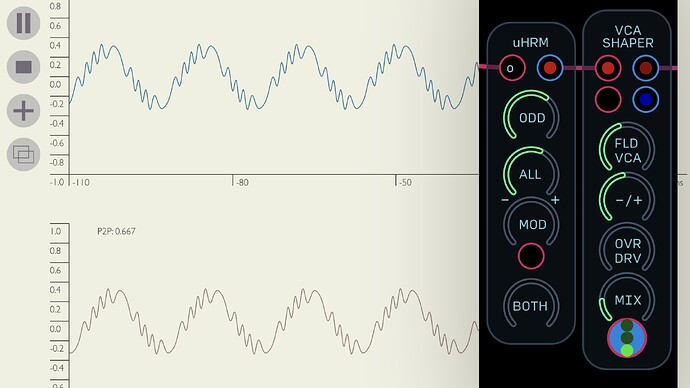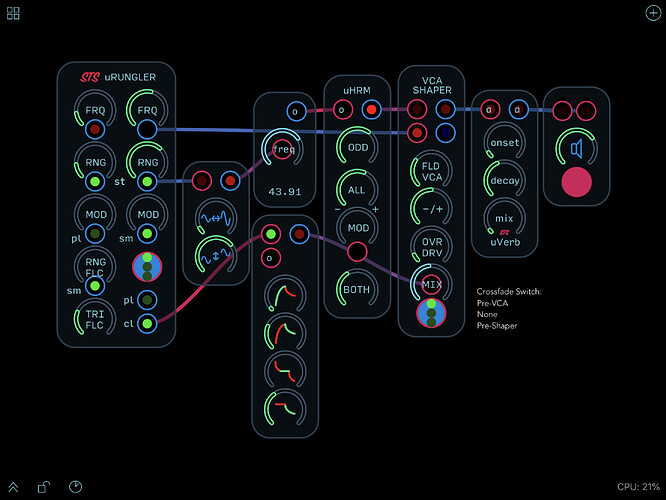This is a repost of part of a thread from the old-forum.
@RobertSyrett briefly touched on the subject of wavefolding in his recent Know your Nodes Audulus tutorial on Phase Modulation. He notes that even in the case of the carrier oscillator having a frequency (ratio) of zero, one can still obtain a result – the carrier can be used as a waveshaper.
Rob Hordijk takes a closer look at this fascinating topic in tutorial #18 of his series given at the NOVARS research centre. Using Robert Syrett’s Audulus Wavefolder as a starting point I set about recreating what I could glean from Hordijk’s tutorial video.
As usual, Hordijk takes care to think things through and combine elements in a way that takes it all to the next level. He cleverly adds a crossfader to the waveshaper so that one can easily adjust between the original signal and the folded one – something that can be especially effective when subjected to voltage control. The one side of the crossfader can furthermore be set to point to either the original signal, no signal at all, or the output of the VCA.
The VCA is, as far as I can gather, a bipolar VCA along the lines of the one in his Dual Fader. With an inverted signal equally present alongside the original the two signals cancel each other out – until one introduces some modulation. With modulation at audio rates the resulting ring modulation provides a nice counterpart to the harmonic content generated by the wavefolding.
With the VCA/folding knob turned all the way to the left (zero) the VCA is set for ring modulation and is silent if no modulation is applied to its input. Moving gradually to its midpoint results in amplitude modulation and opening it all the way gives the full signal. The crossfader can be used to adjust the mix between the folded signal and the the VCA, which also has its own output.
(Since they share a knob, adjusting the wavefolding means that one also adjusts the VCA. This could be partially solved by adding an extra independent wavefolding modulation input (as Hordijk does on his module), but in my experiments the results didn’t seem different enough to warrant the added (interface) complexity in this context.)
The waveshaper also works nicely alongside the Harmonic Oscillator since the oscillator lacks the verticals of conventional sawtooth or square waves that don’t lend themselves well to wavefolding. (See the end – from around 20m46s – of the above-mentioned Hordijk tutorial.) Conversely the shaper can add a little more definition to the more rounded shapes of the Harmonic Oscillator, at least in my Audulus version of it.
RH-RM VCA-Shaper v1.1.audulus (38.6 KB)
And here’s a little demo: RH-RM Waveshaper Demo.audulus (250.6 KB)



